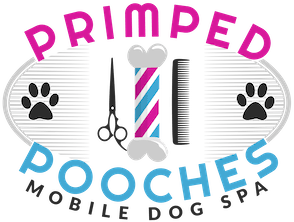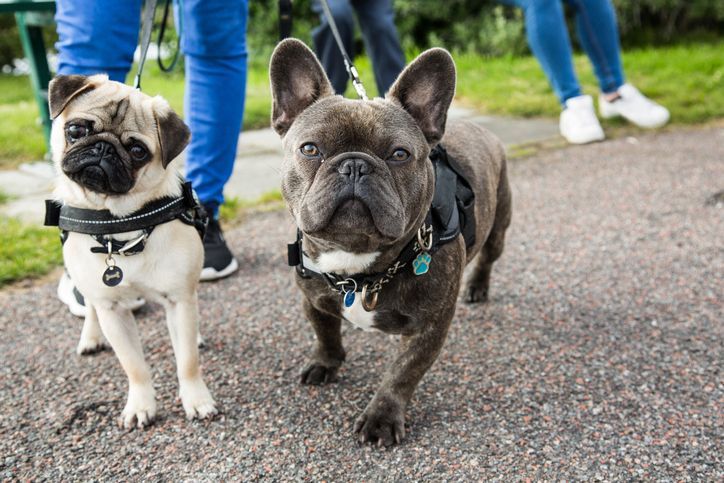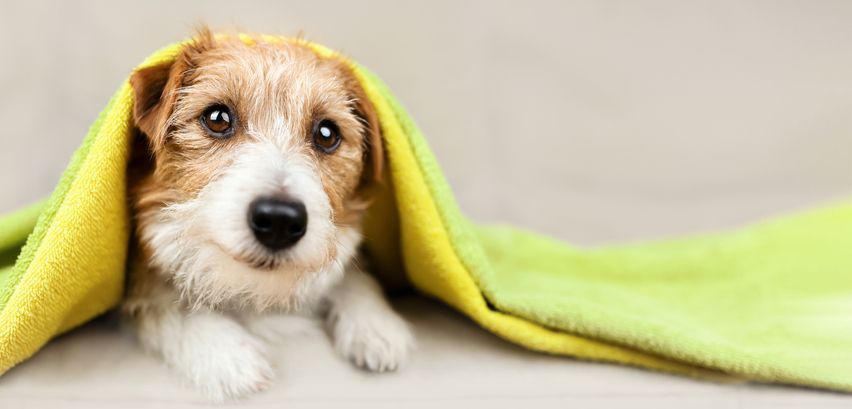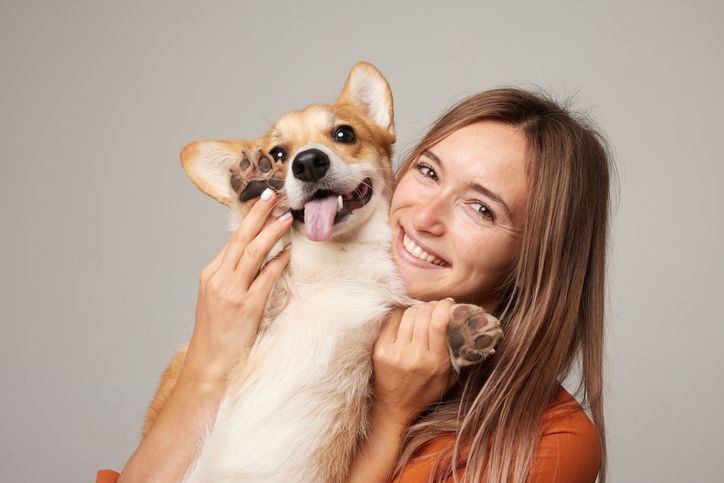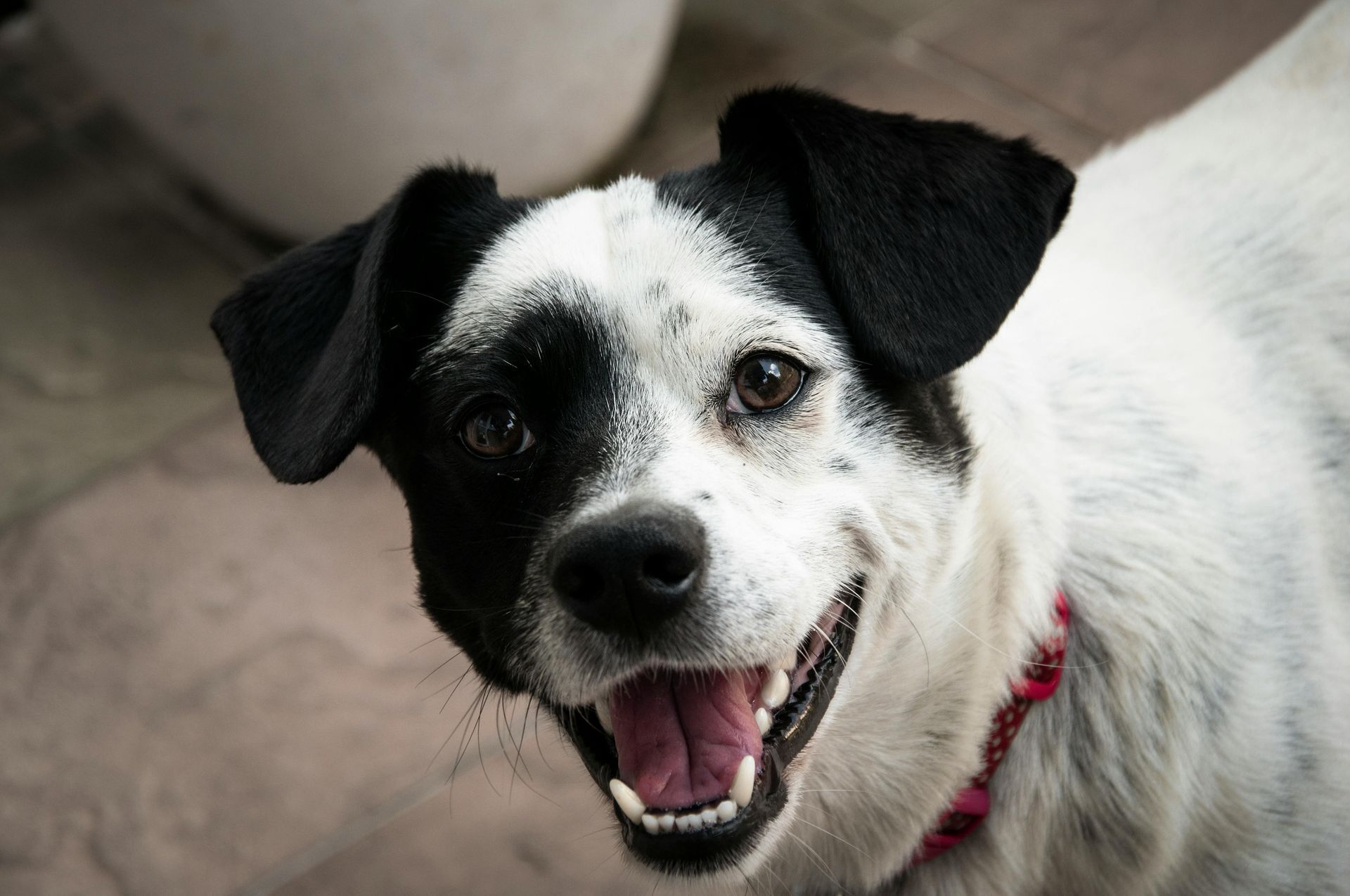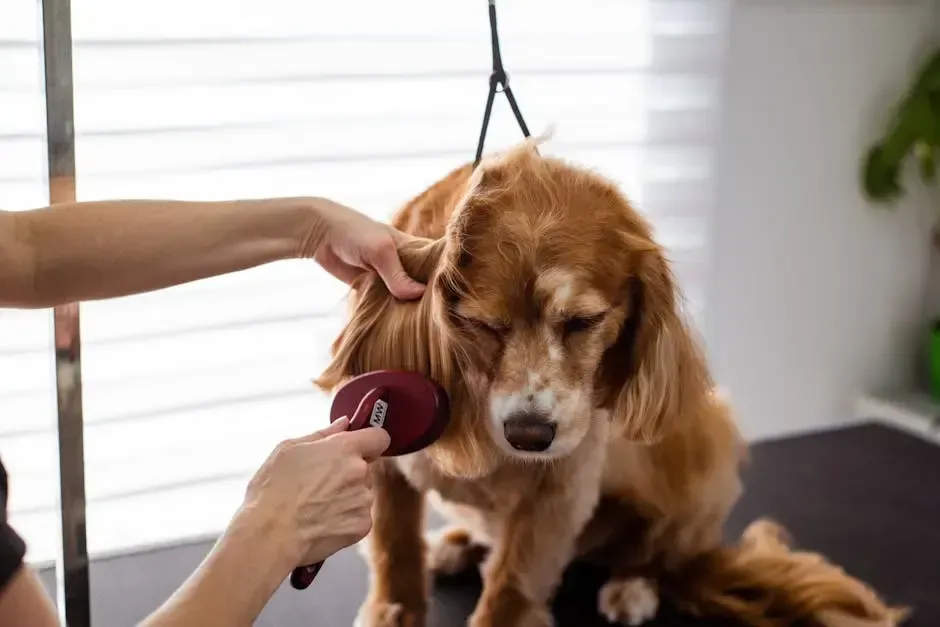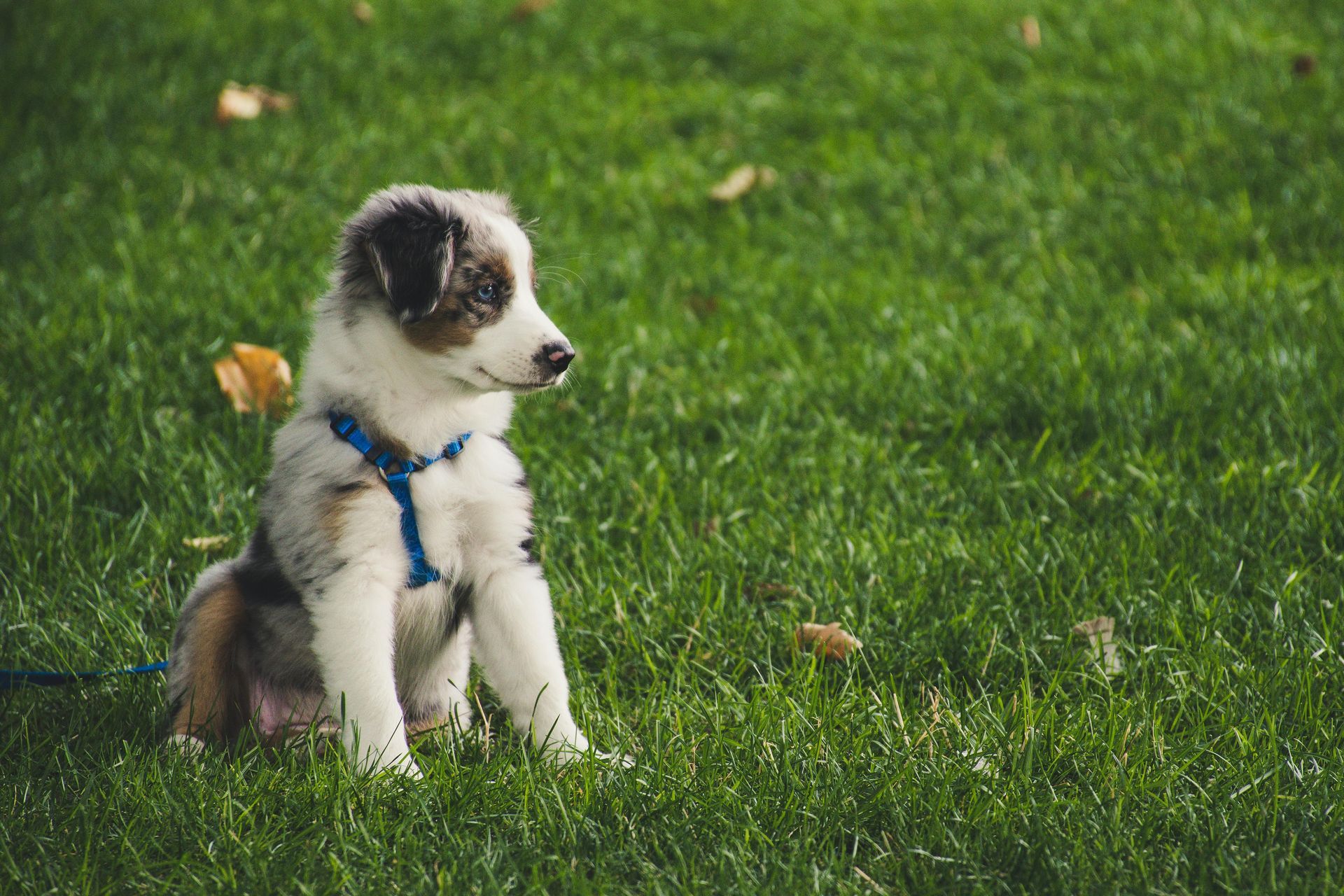A Quick Guide to Dog Baths
August 16, 2021
From Your Local Mobile Dog Groomer
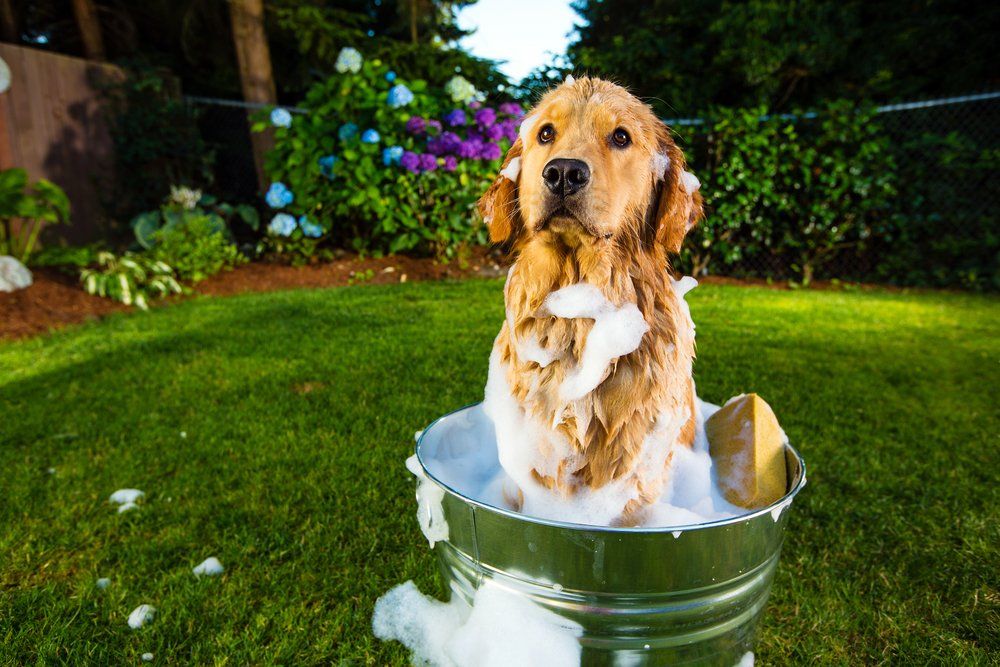
Some dogs love their baths and some dogs hate their baths, but all dogs need a refreshing shampoo and rinse from time to time between visits with your groomer. Here's a quick guide to master safe and successful dog bathing for the first-time dog washer or anyone who hasn't bathed a dog in a while.
Use Appropriate Dog Bath Materials
If you're lucky enough to have a dedicated dog-washing station in your home, you're ahead of most dog owners. However, dog-bath supplies don't have to be fancy or complicated to get your dog's coat clean and refreshed. Some people use their bathroom or kitchen sinks for bathing small dogs. Owners of large-breed dogs often bathe their pets in the home bathtub or shower.
Dog hair and dander do clog drains. If you use your household fixtures for pet baths, always place a special drain screen in your tub or sink to catch the dog hairs loosened by vigorous scrubbing and rinsing.
Small, medium, and large totes made of sturdy plastic or rubber can function as simple dog baths in a pinch. A clean, rust-free livestock tank also works to contain a super-dirty dog during a needed soak. Rigid dog pools and expanding dog baths
are available for large-breed dogs and can be used outdoors.
No matter which type of dog bath you choose, ensure it is:
- Made of sturdy, non-sharp material
- Has a slip-proof bottom
- Is leak proof
- Offers UV-resistance (if used outdoors)
- Is manufactured with non-toxic materials
- Is engineered to hold your pet's weight plus water
For a fancier and/or more convenient dog-bathing experience, choose a platform or folding dog bath. Elevated platform baths are usually mounted on legs and keep you from having to bend over as you clean your miniature or medium-size pup. Folding dog baths are portable and ideal for travelers and those with small apartments.
Wash Dogs With Canine-Specific Bathing Products
Your dog's veterinarian is the best person to ask about the ideal types of shampoos and bathing products for your dog. There are so many different types of canine coat and skin issues, you have an array of therapeutic, deodorizing, and skin-soothing soaps and shampoos from which to choose for your pet.
Shop the veterinarian's office, farm store, or a local pet-supply store to find dog shampoos and cleaners to help with the following issues:
- Dry, flaky skin
- Dull coat
- Oily coat
- Tangled coat
- Eye stains
- Itchy, irritated coat
- Smelly coat
- Mites and mange
If your dog has a serious skin or coat condition, their veterinarian may recommend medicated dog shampoo or other bath-time treatments. For example, if your pup has a rash, shampoo ingredients like oatmeal can calm the itch and reduce your dog's skin inflammation.
Avoid using human shampoo on dogs. Human shampoos dry out a dog's skin and coat and may slow the treatment progress of their skin issues. Always bathe your dog with shampoos that are specifically intended for safe use on canines.
Additional items to gather for doggy bath time include:
- Dog brush
- De-tangling comb (if needed)
- Water toys
- Cup for pouring (if no shower nozzle)
- Washcloth or clean rag
- Towels or doggy bathrobe
A dog-grooming blow dryer is optional. However, if you bathe your dog in a cold climate or you have a dog with exceptionally long hair, a grooming dryer is a quick way to make your dog comfortable after their bath. Don't use a hot hair dryer intended for people, since drying your dog with a too-hot dryer can cause red, itchy skin on your dog.
A water-sport-style swimming harness for dogs can help you contain a boisterous pup during bath time. The harness does make it harder to bathe all parts of the dog. However, a well-made, water-safe harness is a suitable last-resort tool to help you keep a wiggling dog in the suds.
Remember the Dog-Bathing Basics
Remain calm as you bathe your dog, even if your pooch is freaking out. Enlist the help of another adult to manage a stronger, more water-shy dog. You don't want your dog getting used to the idea of jumping out of the water whenever they feel like it.For your dog's bath, use lukewarm water that's about as warm as you'd allow for a small infant. Your dog will be more bath-compliant if you never use overly hot or very cold water to wash or rinse your dog.
Follow these seven steps to bathe your dog properly:
- Brush your dog well to remove stray hairs and tangles.
- Rinse your dog, then soap up their back with a good lather.
- Wash the dog's entire body, including their legs and tail.
- Scrub the dog's neck and chest, adding shampoo as needed.
- Wash the dog's face, snout, and ears gently with a damp rag or sponge.
- Avoid getting shampoo or bath water inside the dog's ears, eyes, or snout.
- Rinse your dog twice to remove all shampoo residue.
Use your hand to squeeze out excess rinse water from your dog's coat before removing your pet from the bath. Use towels to dry your dog well and fluff up their fur.
Be Ready for the After-Bath Wiggles
Have a warm after-bath spot prepared for your dog. A small dog might want to cozy up in a fleece throw, while a larger breed might prefer a few towels draped over their back in a warm room.
Most dogs will shake vigorously to get excess water out of their coats. Depending on the size of your dog, they could shake out water in a large area as they do the after-bath shimmy. Be ready for the shake-out by keeping your dog in a water-proof or casual living area after their bath until your pet is nice and dry.
Whether you bathe your dog once a week or once a season, the above tips will help you clean your dog safely and confidently. If you don't feel confident washing your own dog, schedule a bathing and grooming session
for your dog at your local veterinarian's office or pet grooming salon. Your dog benefits from the attention no matter who scrubs their back.
